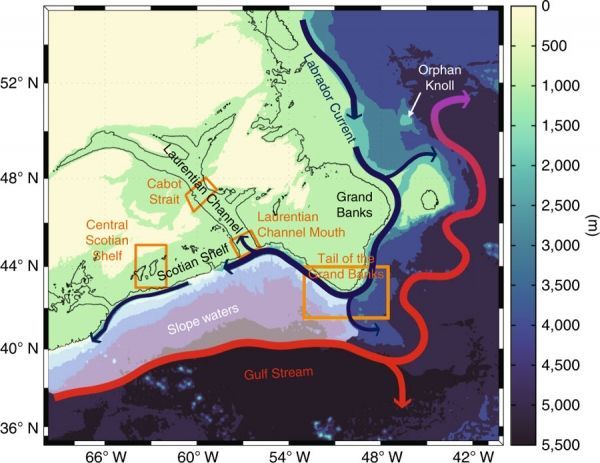The Gulf of St. Lawrence has warmed and lost oxygen faster than almost anywhere else in the global oceans. The broad, biologically rich waterway in Eastern Canada drains North America’s Great Lakes and is popular with fishing boats, whales and tourists.
A new study led by the University of Washington looks at the causes of this rapid deoxygenation and links it to two of the ocean’s most powerful currents: the Gulf Stream and the Labrador Current. The study, published Sept. 17 in Nature Climate Change, explains how large-scale climate change already is causing oxygen levels to drop in the deeper parts of this waterway.
“The area south of Newfoundland is one of the best-sampled regions in the ocean,” said first author Mariona Claret, a research associate at the UW’s Joint Institute for the Study of the Atmosphere and Ocean. “It’s also a very interesting area because it’s at the crossroads where two big, larger-scale currents interact.”
Canada’s fisheries agency has tracked rising salinity and temperature in the St. Lawrence region since 1920. Oxygen has only been monitored since 1960, and the declining trend is causing concern.
Continue reading at University of Washington
Image via Mariona Claret, University of Washington


